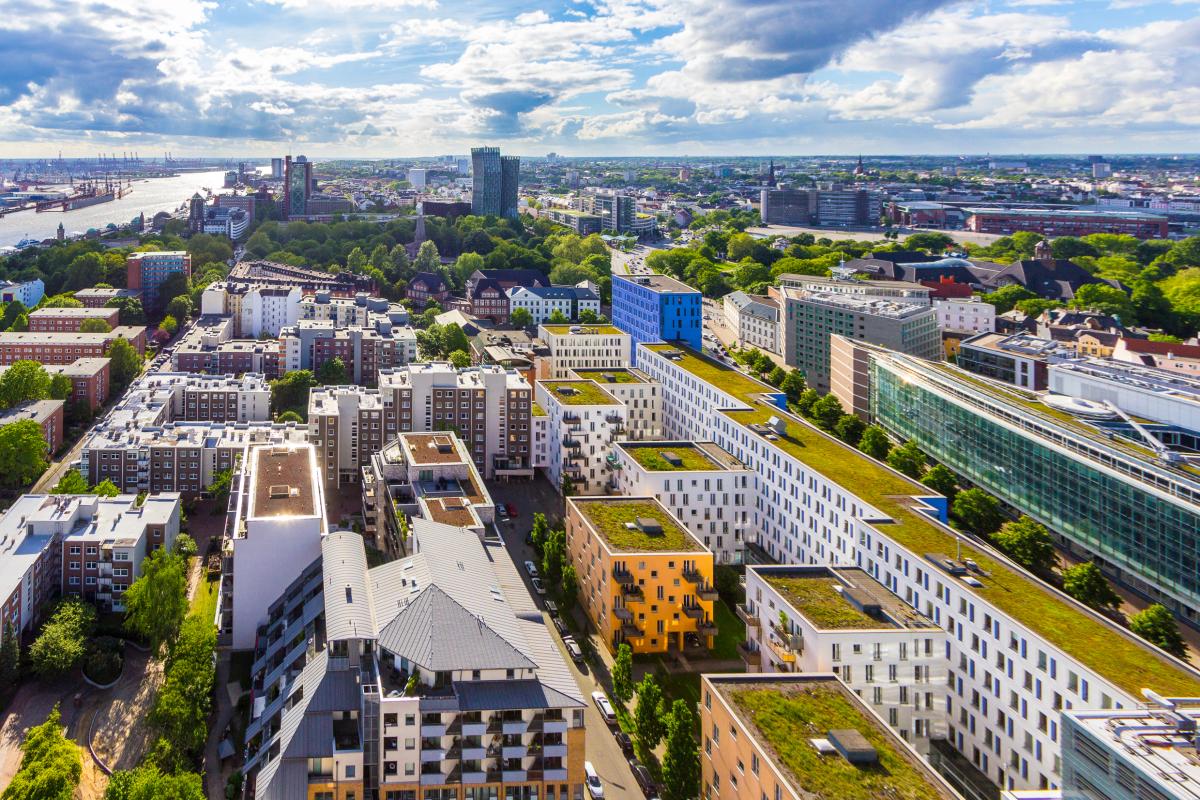Our planet is rapidly losing its biodiversity1. Here, green infrastructure (GI)offers a potential solution; GI involves protecting, creating, restoring and connecting green spaces to create strategic networks of both natural and man-made spaces across an environment – from parks to green walls, wildflower verges, woodlands, reedbeds and more. GI can help environments mitigate and adapt to climate change, keep ecosystems healthy, support sustainable development and strengthen ecosystem services (the benefits an ecosystem provides to humans). A key example of GI in the EU is the Natura 2000 network, which is the largest coordinated network of protected areas in the world. The Natura 2000 network covers over 18% of the region’s land area and 9% of its marine territory
While it is not mandatory for Member States to implement GI strategy, GI is being increasingly used in EU landscape planning as a way to increase the resilience of ecosystems and prevent further biodiversity loss. Both the EU Biodiversity Strategy to 2020 and 2011 Roadmap to a Resource Efficient Europe set out commitments to developing a GI strategy; these commitments culminated in the Commission’s Green Infrastructure Strategy in 2013, which identified GI as a priority for future investment. Green and blue infrastructure continue to be promoted in the EU Biodiversity Strategy for 2030. In 2019, the Commission reviewed progress towards realising this GI strategy, finding that while the benefits of GI have been effectively highlighted and some momentum built, GI is yet to be implemented strategically at an EU level, and instead is often only deployed at smaller scales2.
To understand how GI strategy unfolds as policy, one must consider the complexity of the policymaking process and understand that policy will be applied and interpreted to different degrees across Member States, say the researchers of a new study into GI policy in Sweden.
They take a ‘policy mobility’ and ‘policy assemblage’ approach – one that accounts for how policy moves, evolves, manifests and assembles over space and time and across borders – to review how GI policy has come together in Sweden, focusing predominantly on biodiversity conservation. They explore Swedish policy through the lens of ‘problem representation’ by asking ‘What’s the problem represented to be?’, allowing them to study not only a policy’s content but also its structure, design, and how its components function in relation to each other and wider contexts.
They find that GI policy in Sweden contains a mix of ideas developed in both Sweden specifically and in the wider EU. Swedish policy is increasingly influenced not by a focus on biodiversity, reveal the researchers, but instead on the multi-functionality of land – the potential to conserve biodiversity on land that is not primarily used for this purpose. In this way, the policy could mainstream biodiversity conservation across different sectors and bring it more strongly onto the land-use agenda, they say. However, their analysis suggests that implementing Swedish GI policy will likely promote measures that are less disruptive to existing land-use activities, meaning that its capacity to halt biodiversity loss may be marginal.
They also highlight areas where the underlying complexity of the problem has not been properly addressed – for example, limited land resources (including trade-offs for use), lack of priority criteria for action, and inadequate local infrastructure. Trade-offs and priorities must be clearly considered and identified if GI policy is to be effective, the researchers say; the ability of any policy to protect biodiversity depends on political priorities regarding how conservation relates to land use. Without clear priorities biodiversity will lose out, particularly in areas with high land scarcity. Additional means of financing for GI initiatives are also needed, the study concludes, along with multi-level structures that enable landowners and administrators to collaborate effectively.
Footnotes:
- IPBES (2019): Summary for policymakers of the global assessment report on biodiversity and ecosystem services of the Intergovernmental Science-Policy Platform on Biodiversity and Ecosystem Services. S. Díaz, J. Settele, E. S. Brondízio, H. T. Ngo, M. Guèze, J. Agard, A. Arneth, P. Balvanera, K. A. Brauman, S. H. M. Butchart, K. M. A. Chan, L. A. Garibaldi, K. Ichii, J. Liu, S. M. Subramanian, G. F. Midgley, P. Miloslavich, Z. Molnár, D. Obura, A. Pfaff, S. Polasky, A. Purvis, J. Razzaque, B. Reyers, R. Roy Chowdhury, Y. J. Shin, I. J. Visseren-Hamakers, K. J. Willis, and C. N. Zayas (eds.). IPBES secretariat, Bonn, Germany. 56 pages. Available from: https://doi.org/10.5281/zenodo.3553579
- Brussels, 24.5.2019 COM (2019) 236 final. REPORT FROM THE COMMISSION TO THE EUROPEAN PARLIAMENT, THE COUNCIL, THE EUROPEAN ECONOMIC AND SOCIAL COMMITTEE AND THE COMMITTEE OF THE REGIONS. Review of progress on implementation of the EU green infrastructure strategy. Available from: https://eur-lex.europa.eu/legal-content/EN/TXT/PDF/?uri=CELEX:52019DC0236&qid=1562053537296&from=EN
Source:
von Post, M., Knaggård, Å., Alkan Olsson, J., Olsson, O., Persson, A. S., and Ekroos, J. (2023) The Swedish green infrastructure policy as a policy assemblage: What does it do for biodiversity conservation? People and Nature, 5 (2): 839–851. Available from: doi.org/10.1002/pan3.10456
To cite this article/service:
“Science for Environment Policy”: European Commission DG Environment News Alert Service, edited by the Science Communication Unit, The University of the West of England, Bristol.
Notes on content:
The contents and views included in Science for Environment Policy are based on independent, peer reviewed research and do not necessarily reflect the position of the European Commission. Please note that this article is a summary of only one study. Other studies may come to other conclusions.

